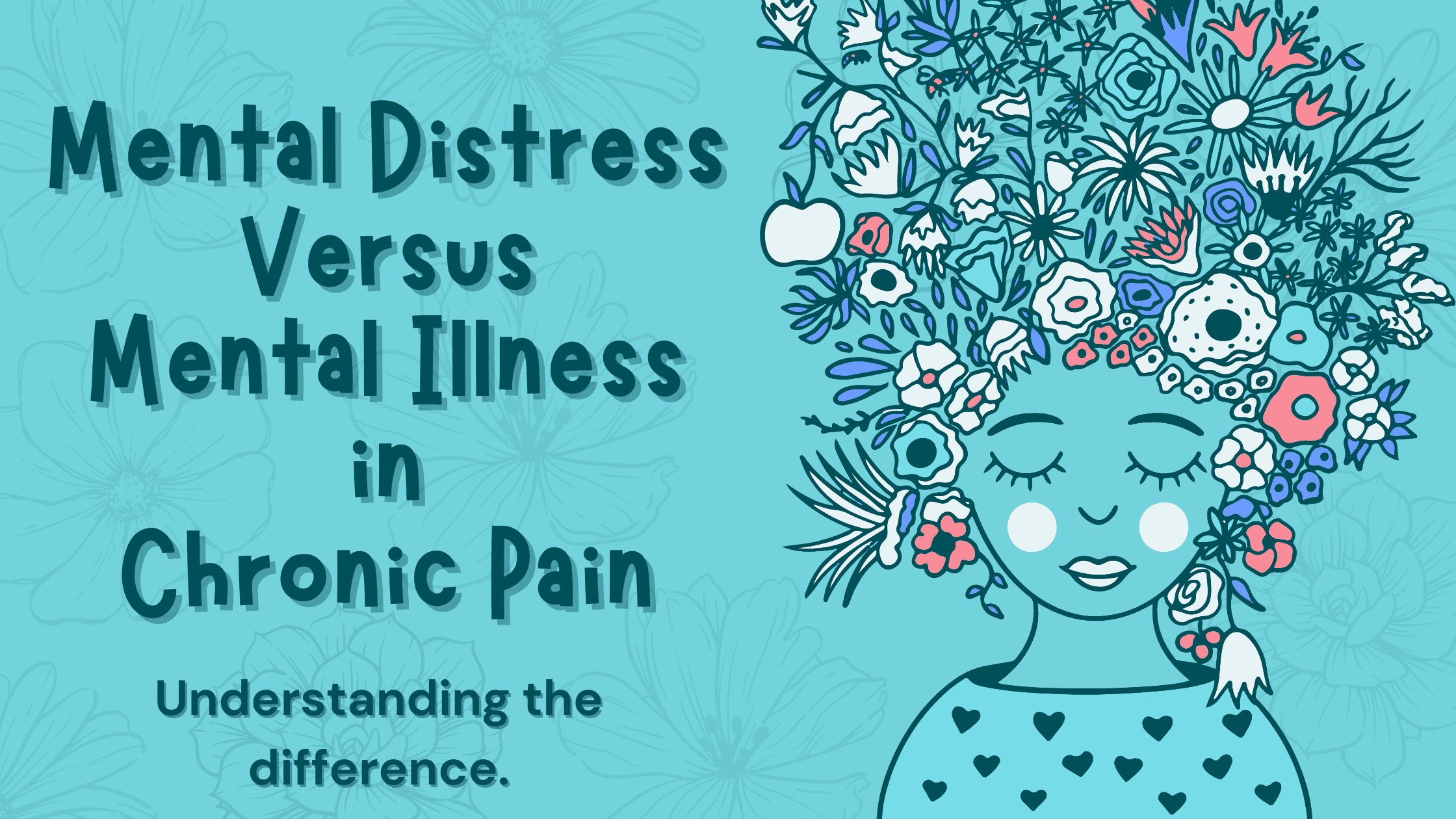Our failure to address chronic pain naturally and safely has led to unacceptably high human, social, and economic costs. Nowhere is this more prevalent than with low back pain (LBP). Low back pain is a leading cause of disability worldwide, and a growing health concern. Globally the number of years lived with disability (YLD) due to LBP has increased by more than 50% since 1990 (1).
A common and unfortunate perception about back pain is that it is always of mechanical origin from a “weak” or injured spine. This belief has contributed to the burden of chronic LBP around the world. Both low back pain, and chronic pain in general, are multifactorial with sensory, affective and cognitive contributors. Treating back pain from a purely biomechanical perspective can lead to risky interventions such as ineffective spinal fusion or the overprescribing and overreliance of narcotic opioids.

Psychologically Informed PT: What’s the Best Way to Treat LBP?
Most cases of LBP do not have an identifiable pathology, therefore surgery is seldom justified. Analgesics may provide temporary relief for LBP, but are by no means a solution. With continuous use our bodies desensitize to their effects and adverse side-effects eventually start accumulating.
Massage and manual therapy can help, but neither interventions go deep enough to address the main root causes of LBP. These are supportive, not corrective techniques for the spine. Most chronic pain conditions require lifestyle interventions and education to address sedentarism, suboptimal nutrition, and physical and the buffering of psychosocial stress.
Physical therapy is arguably the most efficient and cost-effective way to treat chronic LBP. A study compiling data from over 32,000 patients from a national database of employer-sponsored health plans showed that early physical therapy following a recent primary care consultation reduced the risk of subsequent health care compared with delayed physical therapy. Early physical therapy significantly decreased risk of advanced imaging, additional physician visits, surgery, injections, and use of opioid medications. Total medical costs for LBP were $2736 lower (2007-2009 dollars) for patients receiving early physical therapy (2).

To learn more, check out my blog HOW PSYCHOLOGICALLY INFORMED PHYSICAL THERAPY (PIPT) IMPROVES MUSCULOSKELETAL OUTCOMES
Treating Mind and Body: PIPT for Chronic Low Back Pain
Psychologically Informed Physical Therapy (PIPT) is a key component of the biopsychosocial management approach to pain care in PT practice. It encompassess “all treatments in which physical therapy is delivered within a psychosocial framework” (3, 4). PIPT may include Cognitive Behavioral Therapy (CBT), Acceptance and Commitment Therapy (ACT), relaxation techniques, compassion-focused or mindfulness‐based therapies, patient education, and other psychological therapies.
PIPT is based on identifying psychological and behavioral processes that influence:
- pain perception
- behaviors, attitudes, and beliefs
- responses to the pain experience
All of the above factors may be modified to reduce pain (5). PIPT is increasingly viewed and accepted as a prime option for nonpharmacological pain management, and an integral part of physical therapy provision advocated by the World Health Organization and several national health systems worldwide (6).
FACT OR FICTION? PSYCHOLOGICALLY INFORMED PHYSICAL THERAPY WORKS BETTER FOR PAIN
What Do Physical Therapists Think About PIPT?
A 2019 study in the Journal of Musculoskeletal Care looked at the association between clinicians’ attitudes and beliefs about PIPT, and their management of patients with LBP. 33 (17 women, 15 men) physiotherapists employed in musculoskeletal practice at a large NHS Trust in the UK were interviewed to assess their understanding, actual implementation, and confidence in delivering PIPT (7). Participants were asked to consider patients 16 years or over, who had LBP lasting at least 12 weeks, with or without sciatica, and without signs of serious pathology.
The survey was anonymous and consisted of three parts:
- General information about each physiotherapist
- A rating scale to assess the physiotherapist’s thoughts and opinions surrounding psychologically informed approaches and other treatment techniques
- The 19‐item modified Pain Attitudes and Belief Scale, (PABS) to categorize physiotherapists as having a biomedical or biopsychosocial treatment orientation
Overall, the results of the survey revealed that psychological approaches are highly valued among PTs, but several barriers make them hard to implement in practice.
- All PTs recognized that psychological approaches were important in the management of LBP, 18 regarding them as extremely important, and 11 as very important.
- Overall respondents felt they understood PIPT; 4 rated their understanding as very good, half (16/32) as good, 7 as fair, and only 4 rated their understanding as poor.
- However, more than two‐thirds (23/32) reported that they were somewhat, slightly, or not at all confident to use psychological techniques within physical therapy.
Learn more about INTEGRATING PSYCHOLOGICAL AND BEHAVIORAL APPROACHES INTO PHYSICAL THERAPIST TREATMENT OF CHRONIC PAIN.
In line with a shared recognition of the therapeutic benefits of PIPT, 29 PTs scored higher for biopsychosocial than for biomedical orientation on the PABS scale.
Interestingly, although most PTs acknowledged little confidence in their ability to deliver PIPT, 40% (13/32) listed ‘combined physical and psychological programs’, and 84% (27/32) ‘patient education and advice’, among the treatment techniques they used in the management of LBP. Pain education, relaxation, mindfulness, neuroscience education, cognitive functional therapy, and cognitive behavioural therapy were the main psychologically informed techniques used by PTs.
Not surprisingly, ‘exercise’ and ‘manual therapy’ were the PTs’ top physical approaches, while acupuncture (no longer recommended in UK’s NICE current best practice guidance to treat LBP) was listed by 9 PTs.

Dr. Tatta’s simple and effective pain assessment tools. Quickly and easily assess pain so you can develop actionable solutions in less time.
PIPT for LBP: Common Barriers, Urgent Needs
Despite widespread support for psychologically informed care among the PTs surveyed, few actually implemented it in practice. As pointed out by the study above and several others, a main barrier to using PIPT is the lack of formal training in psychological therapies, which diminishes of course confidence in their delivery (8). In this regard, it would be necessary to provide “a clear definition of psychologically informed approaches for physiotherapists, their feasibility, and detailed guidance on how to incorporate them into a musculoskeletal setting” (7). Ideally, this should be paired with unified or standardized decision-making tools, such as the Subgroups for Targeted Treatment (STarT) Back, to identify patients likely to benefit from PIPT and help define targeted treatments.
Other challenges have to do with managing patients’ expectations about PT services (i.e. the delivery of physical rather than psychological interventions), engaging patients in self-management, encouraging activity, assuring compliance, and assessing whether there is appropriate family and social support.
Lastly, a number of organizational factors are at play and need to be addressed. These include adapting practice strategies to the diverse points of care at which PTs may deliver their services, patient demographics and cultural context, time constraints, and fee structures (4, 5, 12).
The Integrative Pain Science Institute is closing the gap by teaching innovative new pain science principles and biopsychosocial skills that benefit your patients and improve your practice.
Click here to learn more about training for practitioners.
REFERENCES:
1- Clark, S., & Horton, R. (2018). Low back pain: a major global challenge. The Lancet, 391(10137), 2302.
2 Fritz, J. M., Childs, J. D., Wainner, R. S., & Flynn, T. W. (2012). Primary care referral of patients with low back pain to physical therapy: impact on future health care utilization and costs. Spine, 37(25), 2114-2121.
3- Main, C. J., & George, S. Z. (2011). Psychologically informed practice for management of low back pain: future directions in practice and research. Physical therapy, 91(5), 820-824.
4- Wilson, S., Chaloner, N., Osborn, M., & Gauntlett-Gilbert, J. (2017). Psychologically informed physiotherapy for chronic pain: patient experiences of treatment and therapeutic process. Physiotherapy, 103(1), 98-105.
5- Keefe, F. J., Main, C. J., & George, S. Z. (2018). Advancing psychologically
informed practice for patients with persistent musculoskeletal pain:
Promise, pitfalls, and solutions. Physical Therapy, 98(5), 398–407.
6- Alexanders, J., & Douglas, C. (2016). The role of psychological skills within physiotherapy: A narrative review of the profession and training. Physical Therapy Reviews, 21(3-6), 222-227.
7- Young, D., Callaghan, M., Hunt, C., Briggs, M., & Griffiths, J. (2019). Psychologically informed approaches to chronic low back pain: Exploring musculoskeletal physiotherapists’ attitudes and beliefs. Musculoskeletal care.1– 5. https://doi.org/10.1002/msc.1384
8-Synnott, A., O’Keeffe, M., Bunzli, S., Dankaerts, W., O’Sullivan, P., Robinson, K., & O’Sullivan, K. (2016). Physiotherapists report improved understanding of and attitude toward the cognitive, psychological and social dimensions of chronic low back pain after Cognitive Functional Therapy training: a qualitative study. Journal of physiotherapy, 62(4), 215-221.
9-Denneny, D., Frijdal, A., Bianchi-Berthouze, N., Greenwood, J., McLoughlin, R., Petersen, K., … & de C Williams, A. C. (2019). The application of Psychologically Informed Practice: Observations of experienced physiotherapists working with people with chronic pain. Physiotherapy. doi.org/10.1016/j.physio.2019.01.014.
10-Richmond, H., Hall, A. M., Hansen, Z., Williamson, E., Davies, D., & Lamb, S. E. (2018). Exploring physiotherapists’ experiences of implementing a cognitive behavioural approach for managing low back pain and identifying barriers to long-term implementation. Physiotherapy, 104(1), 107-115.
11-Tracy L. M. (2017). Psychosocial factors and their influence on the experience of pain. Pain reports, 2(4), e602. doi:10.1097/PR9.0000000000000602
12- Nielsen, M., Keefe, F. J., Bennell, K., & Jull, G. A. (2014). Physical therapist–delivered cognitive-behavioral therapy: a qualitative study of physical therapists’ perceptions and experiences. Physical therapy, 94(2), 197-209.



